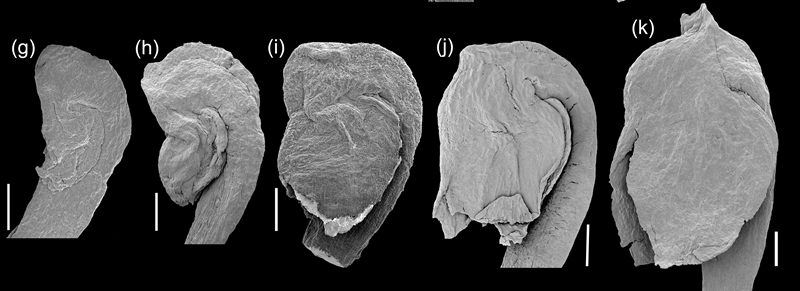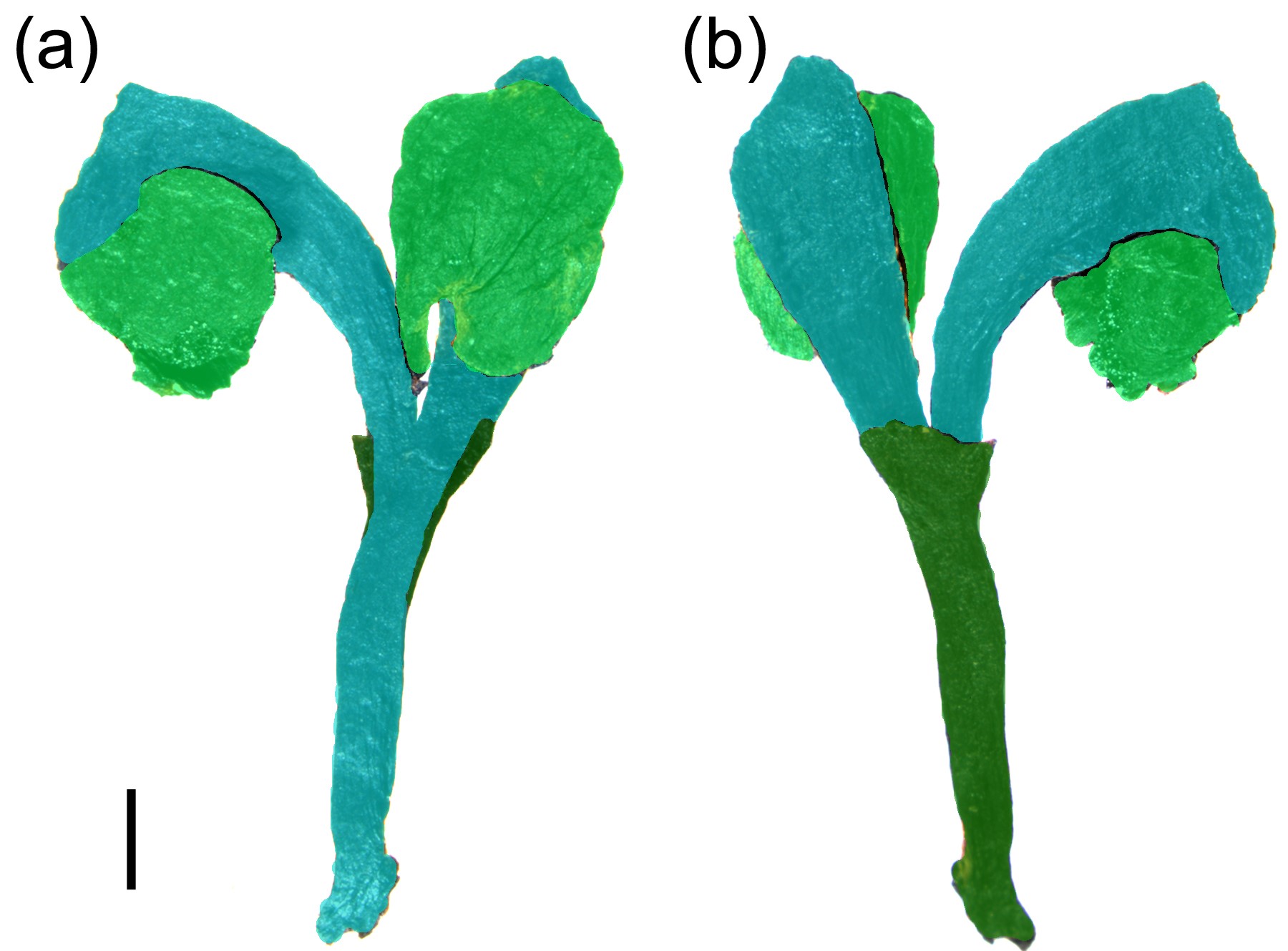
Cupules of Umkomasia mongolica of different size (probably aborted at different stages of development)
The so-called “Mesozoic seed ferns”, a loose assemblage of extinct gymnosperms, are generally taken to comprise Caytonia, corystosperms and peltasperms. These three groups, together with the Permian glossopterids, have been considered of crucial importance for understanding the phylogeny of seed plants and the evolution of their key structural features, including especially the carpel and ovule of angiosperms. However, phylogenetic relationships among these groups, and their relationships to other lineages of living and fossil seed plants, remain uncertain, in large part because of incomplete knowledge and uncertain homologies among their reproductive organs.
In a recent study, Dr. SHI Gongle from Nanjing Institute of Geology and Palaeontology, Chinese Academy of Sciences and colleagues from the US, Mongolia, Japan and Germany described a new species

Seed-bearing unit of Umkomasia mongolica from ventral and dorsal surfaces, showing the subtending bract (dark green), bifurcating axis (blue) and lateral flaps of cupules (light green)
The corystosperm cupule is generally interpreted as a modified leaf that bears a seed on its abaxial surface. However, U. mongolica suggests that an earlier interpretation, in which the seed is borne directly on an axis (shoot), is equally likely. Current hypotheses of seed plant relationships place great weight on whether the seeds in different groups are borne “terminally on a shoot”, or adaxially or abaxially on modified leaves. For corystosperms, the axial interpretation suggested by U. mongolica, points to a possible relationship to Ginkgo, while the reflexed cupule may suggest a relationship to angiosperms. These two ideas may not be incompatible. If the fundamental phylogenetic division between angiosperms and all extant gymnosperms is correct, as suggested by analyses of molecular data, then corystosperms, Caytonia and perhaps other extinct groups, may be close to the point at which the two extant clades diverged.
Download:
